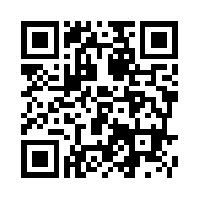QR Codes – love ’em or hate ’em?
QR codes seem to evoke strong feelings in people so before this post goes anywhere, let’s take a poll.
[polldaddy poll=8913044]
Whether you love QR codes and agree with author Scott Strattan that QR Codes Kill Kittens, one thing is certain: they seem to have staying power in education. As I mentioned in a previous post, I am taking a mlearning course #ID4ML through the Canvas Network and will be blogging about my journey. Today’s post is about the first activity: Socrative and QR Codes.
After reading the basic instructions for the activity:
- Create a Socrative Quiz
- Create a QR code and link to quiz created in Socrative
Initially I had doubts about the activity. I use Socrative extensively when teaching so I am pretty familiar with the tool – both the app and web versions. I have never come across a unique URL for either a) the virtual classroom or b) individual quizzes; which means that the URL being used for the QR is basically the login URL that students use. Given that URL could not be specific to my virtual classroom in Socrative it was not clear to me why it was necessary to create a quiz. I could just create the QR code to link to Socrative and be done with it. But the course has been really interesting so I decided to put aside my skepticism and get started with the activity.
Part 1: Create a Socrative Quiz
Instead of using a quiz I already had created in Socrative I used this opportunity to draft a “Syllabus Quiz.” (If you are part of the Seton Hall Univ. community you can access the article for free through the library.) As I was drafting the quiz I began to think how I wanted to use the quiz – make it a required quiz or extra credit? I intend to gamify the course so anything that a student completes earns them points towards the final grade so that point-wise it does not matter if the syllabus quiz is required or extra credit. I need to decide how much I want them to complete and since I really want to try this out I am leaning towards making it required points.
Part 2: Create a QR code and link to quiz created in Socrative
I used the QR Stuff website to generate my QR code.

As I mentioned earlier, there is no way to link directly to a quiz or virtual classroom in Socrative so the link takes you to the student login. This activity is not a great example of using QR codes for teaching and learning. If the class is meeting F2F and using mobile device the Socrative mobile app would be a better option to use (even taking the 15 minutes to allow students to download it to their device.) The same goes for if students are participating remotely – the app or the URL for the web version would be a more authentic and less redundant use of technology.
I still think there is potential for an authentic and relevant use of QR codes in teaching and learning. I think there is something there with Scavenger Hunts, Virtual Field Trips, and/or Museum Exhibit type activities. I have not found a lesson to exemplify the use of QR codes yet but I am on the hunt and I need to try my hand at creating some of my own…but that is for another blog post.
While I will not use QR codes with Socrative I still found myself trying to think of a way that would make using a QR code with my syllabus quiz relevant. In the discussion forums someone had mentioned Augmented Reality (AR) and that got me thinking about the app Aurasma. I have been trying to find an authentic way to integrate this gaming-type app into my course but so far no ideas have come to mind. Now that I made the decision to gamify the entire course I am thinking that I can use Aurasma to create ‘Easter eggs’ for the course. The ‘Easter eggs’ would all be extra credit/points to start which is why I started rethinking making the syllabus quiz a required component of the course. In the end I am going to keep the syllabus quiz as required but come up with other ‘Easter egg’ ideas to get Aurasma as an integrated tool for the course.
So, despite my initial doubts I’m pretty happy with where this activity has lead me on my journey of including mlearning in my course. I am excited to start brainstorming ‘Easter eggs’ and then creating them in Aurasma. Now all I need to do is figure out how I am going to introduce it to the class…in the syllabus? Video embedded in the online LMS? What would you suggest?
